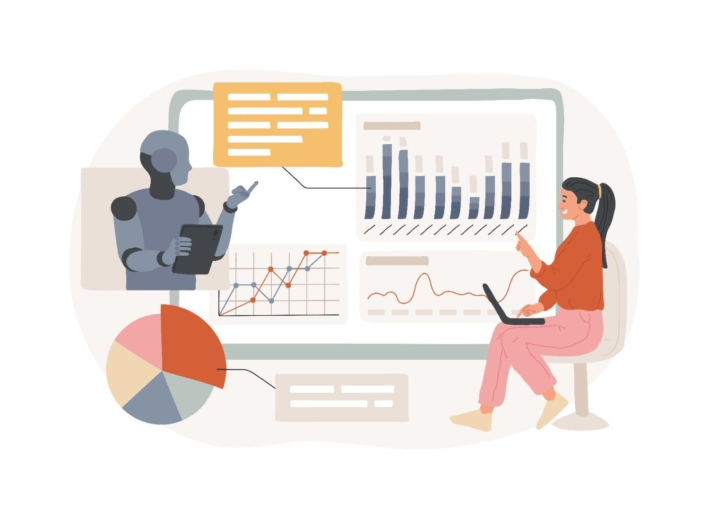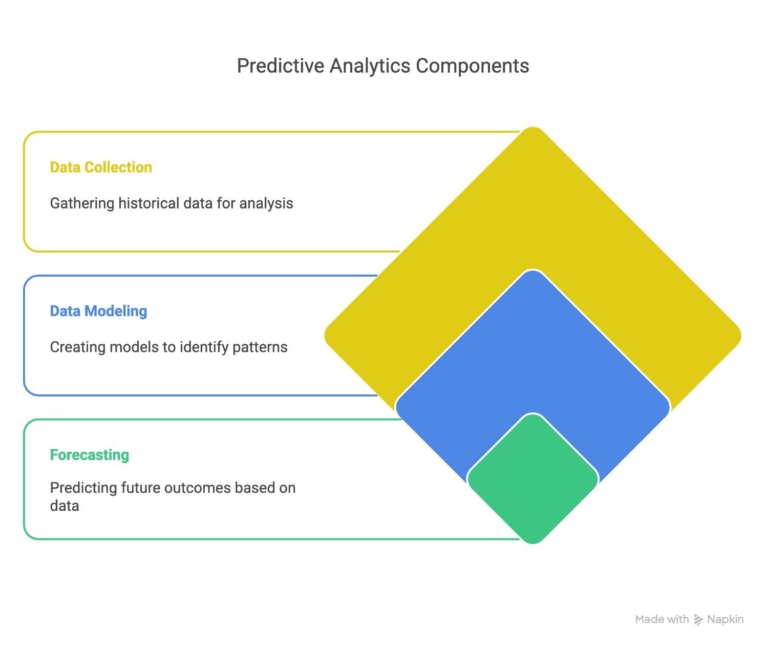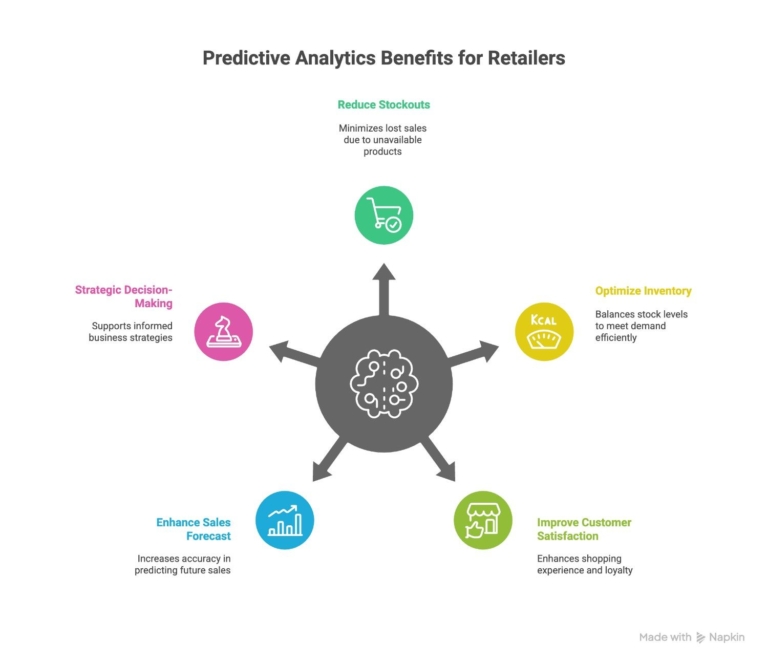Greetings! I'm Aneesh Sreedharan, CEO of 2Hats Logic Solutions. At 2Hats Logic Solutions, we are dedicated to providing technical expertise and resolving your concerns in the world of technology. Our blog page serves as a resource where we share insights and experiences, offering valuable perspectives on your queries.

Retail is one of the fastest-moving industries, where customer preferences and buying patterns can change overnight. For store owners and e-commerce retailers, one of the biggest challenges is accurately forecasting demand.
Wrong demand prediction can cause businesses to either end up with unsold stock tying up capital, or with empty shelves that frustrate customers and hurt sales.
This is where predictive analytics in retail plays a game-changing role. In this blog, we’ll explore how predictive analytics works in retail, the role of AI in demand forecasting, and best practices to prevent lost sales and improve overall efficiency.
What is Predictive Analytics in Retail
Predictive analytics in retail is the practice of using data, statistical algorithms, and AI-driven models to forecast future customer demand and market trends. Unlike traditional forecasting methods that rely on guesswork or limited historical averages, predictive analytics uses large amounts of data to deliver more accurate insights.
At its core, predictive analytics focuses on three main components:

- Data Collection: Retailers gather sales history, customer behavior, seasonal trends, and even external data such as economic indicators or weather conditions.
- Data Modeling: Machine learning algorithms process the data to identify hidden patterns and correlations that humans might overlook.
- Forecasting: The insights generated are turned into demand predictions, helping retailers make better decisions around inventory, pricing, promotions, and supply chain planning.
Pro Tip 1
Analyze your sales data early to spot trends and forecast demand accurately.
The Role of AI in Retail Demand Forecasting
While predictive analytics provides the framework, it is AI and machine learning that bring it to life with speed, accuracy, and adaptability. Traditional forecasting methods often struggle with complex data, but AI can process huge volumes of information in real-time and continuously refine its predictions.
Here’s how AI enhances predictive analytics in retail:
- Advanced Pattern Recognition: AI identifies hidden trends in customer behavior, like how weather, holidays, or local events impact demand.
- Real-Time Forecasting: Unlike static reports, AI updates forecasts instantly as new sales or market data comes in.
- Personalization at Scale: AI can forecast not just at a product level, but at customer-segment levels, helping tailor promotions and inventory.
- Integration with Inventory Management: AI-driven systems connect with supply chain and stock management tools, ensuring automatic reordering before stockouts occur.
For example, AI-driven inventory management allows a retailer to predict which products will sell faster in certain regions or timeframes, reducing both overstocks and missed sales opportunities.
Benefits of Predictive Analytics for Retailers
Implementing predictive analytics in retail offers tangible benefits that directly impact sales, efficiency, and customer satisfaction. Here’s how retailers gain from it:

- Reduce Stockouts and Overstocks
Accurate demand forecasting ensures the right products are available at the right time. Retailers can avoid empty shelves that frustrate customers or excess inventory that ties up capital. - Optimize Inventory and Operations
Predictive analytics helps streamline warehouse management, automate replenishment, and plan supply chain activities more effectively. This reduces operational costs while maintaining product availability. - Improve Customer Satisfaction
When retailers anticipate demand correctly, customers consistently find the products they want, creating a seamless shopping experience that drives loyalty and repeat purchases. - Enhance Sales Forecast Accuracy
With AI-driven predictive models, businesses can make data-backed decisions about pricing, promotions, and product launches, maximizing revenue opportunities. - Strategic Decision-Making
Beyond day-to-day operations, predictive analytics informs broader strategies, such as expansion planning, seasonal marketing campaigns, and trend identification, helping retailers stay ahead of competitors.
Pro Tip 2
Forecast by product, region, or customer group for more precise predictions.
Common Challenges in Implementing Predictive Analytics
While predictive analytics in retail offers significant advantages, implementing it isn’t without challenges. Retailers should be aware of potential hurdles to maximize its effectiveness:
- Data Quality and Integration Issues
AI models rely on clean, accurate, and comprehensive data. Inconsistent or incomplete sales, inventory, or customer data can lead to unreliable forecasts. Integrating multiple systems like POS, eCommerce platforms, and ERP is often a major hurdle. - Staff Training and Change Management
Introducing predictive analytics requires team members to understand and trust AI insights. Lack of proper training or resistance to change can limit adoption and reduce impact. - Cost and ROI Concerns
Implementing AI-driven predictive analytics involves investment in software, infrastructure, and talent. Retailers need to carefully assess the ROI and ensure the benefits outweigh the costs. - Managing Complexity
Forecasting demand across multiple locations, product categories, and customer segments can become complex. Retailers must balance sophisticated analytics with actionable insights.
Conclusion
Predictive analytics in retail, powered by AI and machine learning, enables businesses to anticipate trends, optimize inventory, and deliver a seamless shopping experience.
By using AI-driven forecasting, retailers can reduce stockouts, minimize overstocks, improve operational efficiency, and make smarter, data-driven decisions. While challenges like data quality and implementation complexity exist, following best practices ensures businesses reap the full benefits of predictive analytics.
For retailers looking to take their operations to the next level, 2Hats Logic provides customized AI solutions tailored to your business needs, helping you prevent lost sales, optimize inventory, and grow your revenue effectively.

Related Articles







